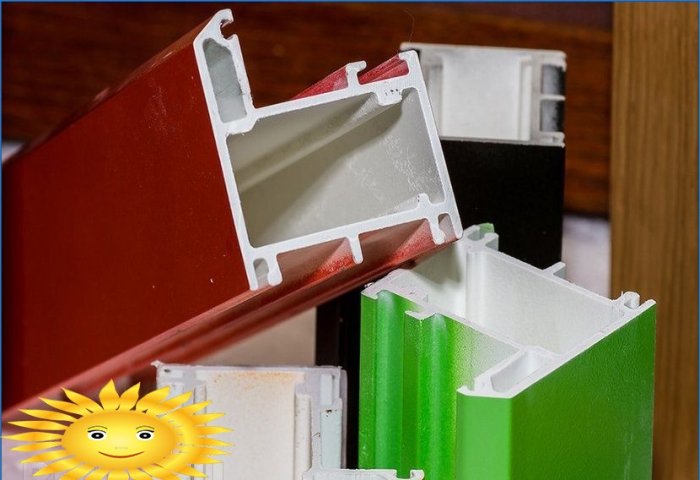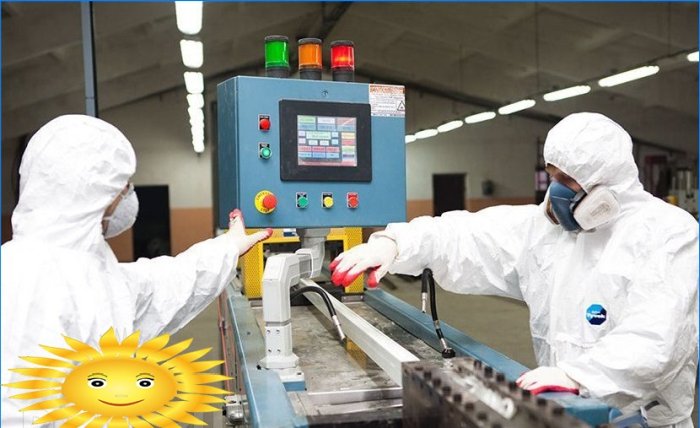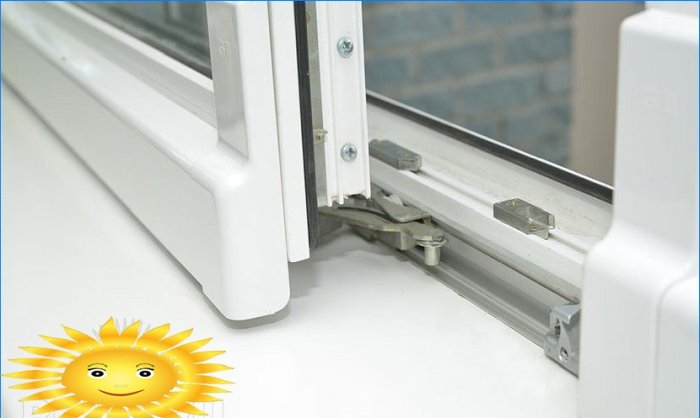Recommendation points
- Technical features
- Advantages of fiberglass windows
- Disadvantages of fiberglass windows
- Constructive decisions
- Prices for typical glass composite windows
- Installation and operation
Fiberglass windows are still rare – they are the “youngest” of all existing translucent systems. Let’s understand their features and capabilities, disadvantages and advantages. Let’s compare with traditional structures, let’s talk about the prospects of window systems made of this material.
Fiberglass as a material has long stood the test of time – it is widely used in the manufacture of boats, yachts, aircraft parts and defense products. The production of door and window profiles on its basis was restrained by the lack of technologies that appeared only in the last decade..
Technical features
Due to its high strength and good heat resistance, the glass-composite profile is simpler than aluminum and plastic: it has fewer chambers, does not need metal reinforcement, as a result, there are no cold bridges in it. Only the locations of the hinges are subject to reinforcement by means of special steel plates 3 mm thick, inserted into the frame when assembling the block.
The frame is assembled using corner and mullion connectors, fastening is done with self-tapping screws, and the joints are protected with silicone sealant of the corresponding color. The internal cavity of the profile is filled with thermal insulation – foamed polyethylene, foam glass or expanded polystyrene.
Fiberglass window construction: 1 – glazing bead; 2 – glazing bead seal; 3 – foamed polyethylene; 4 – glass unit; 5 – glass unit seal; 6 – sash profile; 7 – sash connector; 8 – inner seal; 9 – outer sealant; 10 – frame profile; 11 – impost connector; 12 – impost; 13 – self-tapping screws; 14 – frame connector
The surface of fiberglass can be white, painted in any shade or covered with laminated veneer with a wood texture. If desired, the profile finish from the room side may differ from the outer coating.
Excluding the disadvantages of structures made of other materials, fiberglass windows combine their positive characteristics.
Table. Comparative characteristics of window systems made of different materials
Criterion Material Pvc Wood Aluminum Fiberglass Moisture resistance + – + + Heat saving + + – + Strength – + + + Maintainability – – – + Resistant to fogging different + – + Low linear expansion – + the average + Long service life different – + + Comparative cost X X + 75% X + 35% X + 25% Advantages of fiberglass windows
- Strength comparable to aluminum systems.
- Thermal conductivity on par with wood.
- No deformation due to temperature changes.
- Large selection of color options.
- Functionality is maintained throughout the entire service life.
- High bearing capacity.
Disadvantages of fiberglass windows
In addition to the high price, compared with PVC products, the fiberglass profile has one more disadvantage – a way to bend the material has not yet been found, therefore it will not work to order a full-fledged arched structure from a composite composition.
Dealers offer combined systems in which the top block is made from the usual plastic or warm aluminum. Developments in this direction are underway, the Canadians are already producing arched glass composite windows, which means that they will soon appear in our country..
To fix the glass units, PVC beads or aluminum alloy strips can be used, therefore, multi-colored surfaces are possible, and in the case of plastic, it is obvious that the parts will have to be changed over time.
Constructive decisions
- Classic windows are equipped with the usual tilt-and-turn fittings familiar from plastic products.
- Sliding warm systems – light moving parts move horizontally.
- English windows – vertical or horizontal sashes open outward with a handle located at the bottom of the frame.
- “American” version – products with sliding opening in the vertical plane and the ability to tilt when washing glass.
- Balcony glazing – produced with the maximum possible panoramic view, both cold and warm methods.
- Large windows – a margin of mechanical strength of the material allows glazing of a veranda or terrace up to 3–3.5 m high without additional reinforcing elements.
Prices for typical glass composite windows
The cost of fiberglass systems depends on the type of profile, the number and type of movable sashes. The table shows prices for standard units from Inline Fiberlass Limited, equipped with a double-glazed window, without delivery and installation.
Profile type Description Frame depth, mm Dimensions, mm Price, rub. FGK-300 Tilt & turn double leaf 60 1450×1400 18800 FGK-300 Three-leaf with swing-out and swing-out door 60 1450×1960 30100 FGK-850 Double-leaf sliding with fixed top sash 82.5 1600×800 30,000 FGK-300 Balcony block with swing door 60 2000×1550 27200 FGK-600 Sliding window 60 1400×2000 43000 FGK-300 Sliding portal series 60 1600×2000 61400 Installation and operation
Installation of fiberglass windows is carried out vertically in a rigid opening with fastening along the perimeter with an interval of 500–600 mm and a distance of 100 mm from the corner to the fastening point. The voids around the frame are filled with a heat insulator, followed by protection from moisture.
Due to the almost identical coefficients of thermal expansion of glass and composite material, no gaps are formed between the profile and the seal during temperature drops, which eliminates the need for seasonal adjustment of the fittings.
Care consists in periodic cleaning of the structure with non-abrasive detergents. Severe scratches on the profile are eliminated by tint; if necessary, the decorative coating can be completely renewed by hand. Due to the design principle incorporated in the structure of the glass composite window, in case of mechanical damage to the sash or impost, the defective part can be easily replaced without dismantling the frame.
The choice of the required glazing design is carried out by weighing the pros and cons, often the weighting argument is the price characteristics at the time of solving the problem. But in addition to the acquisition and installation during operation, you have to invest in maintenance. In all windows, fittings should be cleaned and lubricated, and seals should be changed. PVC systems are demanding to adjust the degree of pressure, wooden products need preventive painting.
The cost of glass composite windows is approximately equal to the price of elite plastic models, the main advantage of the new generation of translucent structures is in saving on operating costs.




What are the prominent features and characteristics of fiberglass windows? How do they compare to other window materials in terms of durability, energy efficiency, and maintenance? Lastly, what are the prospects for the future of fiberglass windows in terms of advancements and market demand?